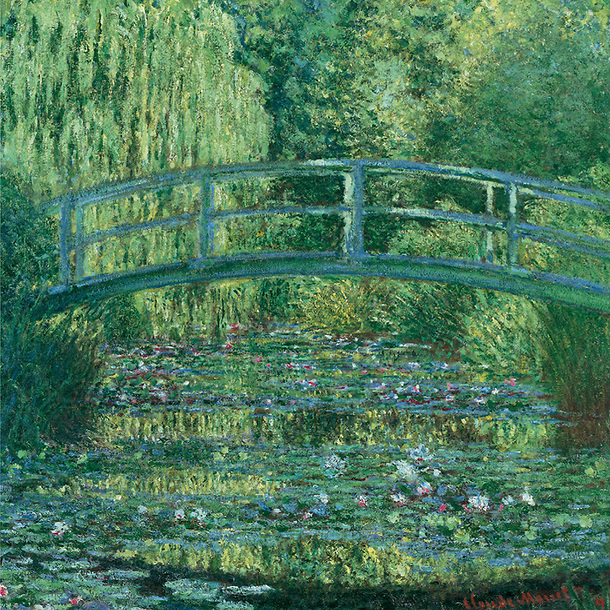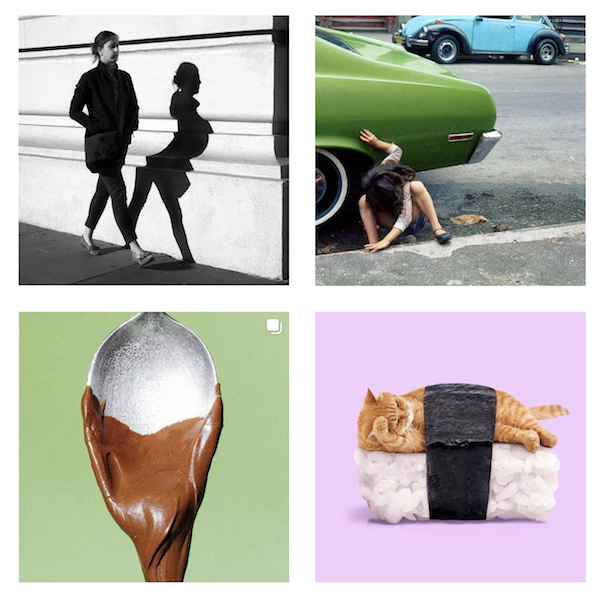Our Brands' Role In Framing Success
November 26, 2019

Yasuhiro Ogawa pour le CRT
As renowned painter Wassily Kandinsky once said, “There is no must in art because art is free.” And although we do agree with that on a theoretical level, experience has shown us that a little push in the right direction can turn a good artist into a great one. In a nutshell, brands that commission artists do not throw a wrench in their creative works, rather, they inspire innovation, empower their artists and are capable of taking art to a whole new level.
A picture of a picture of a landscape
What do modern-day Japanese photographer Yasuhiro Ogawa have in common with nineteenth century French painter Monet? More than you may think. As it turns out, the impressionist movement which included Monet was deeply influenced by Japanese art forms, such as woodblock prints, and their dream-like qualities. Funny enough, Yasuhiro Ogawa rooted his practice of photography upon the impressionist aesthetics he defines as a mix between abstract and realism that conveys emotion. So when he was asked by the French Regional Tourism Committee through OOSHOT’s digital solution to shoot the very landscapes portrayed by Monet, Sisley and Renoir for the 160th anniversary of diplomatic relations between France and Japan, the wheel of art came full circle.


The Caillebotte park in Yerres - Photographer : Yasuhiro Ogawa - Painter : Gustave Caillebotte, 1875


The Wheat field at Corbaux : Yasuhiro Ogawa - Painter : Vincent Van Gogh, 1890


The Moret bridge - Photographer : Yasuhiro Ogawa - Painter : Alfred Sisley, 1893


Le bassin au nymphéas, harmonie verte - Photographer : Yasuhiro Ogawa - Painter : Claude Monet
Although our Japanese photographer was commissioned and the impressionists were not, we find many similarities in their path leading to success that has to do with restraints acting as a driving force. We could break it down into three crucial elements: technology, professional skills, and a third party’s impulse.
We do because we can
From avant-garde currents to new art forms, innovation is often born out of technical progress. We know photographers owe a great deal to Leica’s first travel-size camera. For the impressionists, it was synthetic color manufactured in tube format by the mid-nineteenth century which allowed for the first time in history to work outdoors. This massive breakthrough led the artists to paint with their senses rather than from what they knew about their subject. Vibrant trees, cobalt snow and blazing sunsets gradually replaced the somewhat dark color palette found in pictures at the time. Additionally, outdoor sessions being shorter than in-studio’s, their style naturally evolved towards sketching, and thus accentuating light and color even more.
Nature knows best - Then come the impressionists
Be it nowadays or 200 years ago, the artists finding themselves at the forefront of the art scene knew what they were doing. Same goes for the impressionists who could only profit from the synthetic color innovation because they owned their art. They embody Pablo Picasso’s quote, “Learn the rules like a pro, so you can break them like an artist.” Which is to say they reinvented painting, not by chance, not by accident, but foremost because they were trained professionals capable of evolving within novel parameters. Casting such light on art history helps debunking the myth of the idle artist effortlessly producing masterpieces and hints at what the requirements are in any given creative situation, i.e., hardworking, highly trained people.
Pushing art forward is a full-time job
When technology and experts are united, a third and last piece of the puzzle is usually required to have a blast: let’s call it the Outsider’s Touch. This is the role played by the art dealers and the distributors, and in a broader sense, by the brands and clients. The Outsider’s Touch brings a framework, but also resources, deadlines, a targeted audience, all of which contributes to promote, but also to advance and shape art.
Impressionists were free artists, but they actually came together as a movement thanks to one man, the French art dealer Paul Durand-Ruel. After being banned from the rather conservative Salon the Paris in 1863, the soon-to-be Impressionists were kept at bay by both the potential buyers and exhibitors. As early as 1870, however, Paul Durand-Ruel began distributing their work in London until he opened a space dedicated to like-minded artists in 1974. His innovative marketing strategies, such as pursuing new clients as far as in the US, developing catalogues and establishing mail order selling, consolidated the movement and helped secure its legacy.
What was true then is still true now: advanced technology and highly skilled talents are indeed required on any creative project, but the cornerstone of success lies in the leadership assumed by our brands. Combined with the first two, their vision can produce something truly exceptional, as evidenced by Yasuhiro Ogawa’s work for the Regional Tourism Committee.
Similar news

Power to the Local
September 17, 2019


